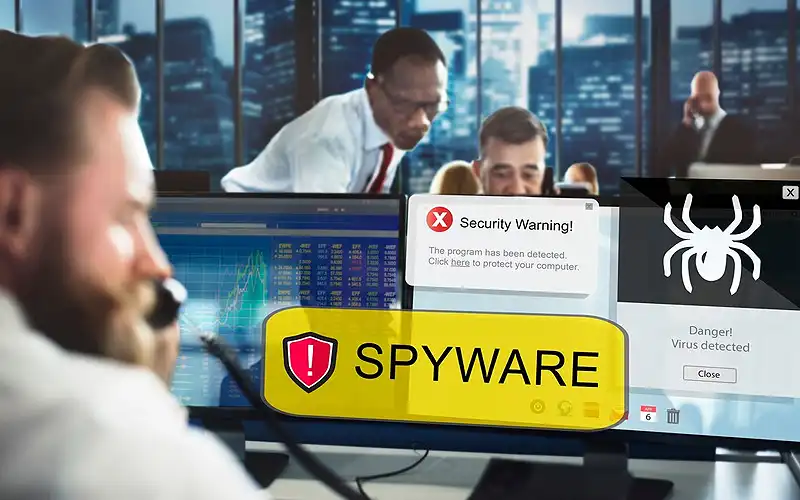
In today's technological age, ransomware scams pose a major threat to both individuals and businesses. Understanding how these scams work and being aware of ways to protect oneself is crucial.
This blog will thoroughly look over ransomware scams, reveal cases, discuss their dangers, and offer advice on how to avoid and recover from them.
Table of Contents
Ransomware is a type of malicious software created to prevent access to a computer system or its information until a certain amount of money (Ransom) is paid.
Typically, this malware encrypts (Locks) files on the device it has infected using a unique code known only to the attacker, making them inaccessible.
The attacker then demands a ransom, promising to restore access once the payment is made. They promise that once you pay, they will give you the code to unlock your files and restore your access. However, there’s no guarantee that the attacker will actually do this, even if you pay the ransom.
Unlike other forms of malware that might aim to steal data or spy on users, ransomware's primary goal is extortion. By holding valuable data hostage, attackers place immense pressure on victims to comply with their demands quickly.
There are various types of ransomware, each with its Method of Operation, Ransom Demand, Risks Involved & Prevention Measures.
Understanding how ransomware spreads is key to preventing it. Here are the main ways attackers use:
By knowing these methods, you can be better prepared to protect your system from ransomware.
If you fall victim to a ransomware attack, taking immediate action is crucial:
Isolate the infected device from the network to prevent the ransomware from spreading.
Contact local authorities and cybersecurity professionals to report the attack.
Paying the ransom does not guarantee data recovery and can fund further criminal activities.
If you have backups of your data, use them to restore your system.
Engage cybersecurity experts to assist with the recovery process and strengthen your defenses.
Investing in cybersecurity is essential to protect against ransomware. This includes implementing robust security measures, conducting regular security audits, and staying informed about the latest threats.
Educating employees about the dangers of ransomware and how to recognize phishing attempts is critical. Regular training sessions can significantly reduce the risk of a successful attack.
Employing advanced security tools like intrusion detection systems (IDS), endpoint protection platforms (EPP), and security information and event management (SIEM) systems can enhance your defense against ransomware.
Having a well-defined incident response plan in place ensures a swift and effective reaction to ransomware attacks. This plan should outline steps for containment, eradication, and recovery, as well as communication strategies for stakeholders.
To truly grasp the seriousness of ransomware scams, let's explore some real-life cases and their devastating impacts.
Small businesses are often targets because they might not have strong security.
Attacks can cause big financial losses, harm their reputation, and sometimes lead to business closure.
Ransomware scams are constantly changing, remaining a consistent danger for both individuals and organizations. Nevertheless, through proactive actions, you can greatly decrease your chances of becoming a target of these harmful attacks.
Ensure that all your software, including operating systems and applications, is regularly updated to protect against known vulnerabilities.
Use strong, unique passwords for all your accounts and change them regularly. Consider using a password manager to keep track of them securely.
Activate multi-factor authentication (MFA) on all your accounts to add an extra layer of security. MFA requires more than just a password to access an account, making it harder for attackers to gain unauthorized access.
Make regular backups of your important data and store them offline or in a secure cloud environment. This ensures that you can restore your data in the event of a ransomware attack.
Stay informed about the latest ransomware threats and educate your team on how to recognize and respond to potential attacks. Regular training and awareness programs can help create a security-conscious culture within your organization.
Consider partnering with cybersecurity experts to conduct regular security assessments and implement advanced protective measures. Their expertise can help you stay ahead of emerging threats and ensure your defenses are robust.
Ransomware scams pose a significant threat, but with knowledge and proactive measures, you can protect yourself and your business. At Financial Options Recovery, we specialize in helping victims recover from these attacks. Our expert team provides the support and resources needed to reclaim your data and secure your digital future.
Contact us today for a consultation and take the first step towards recovery.